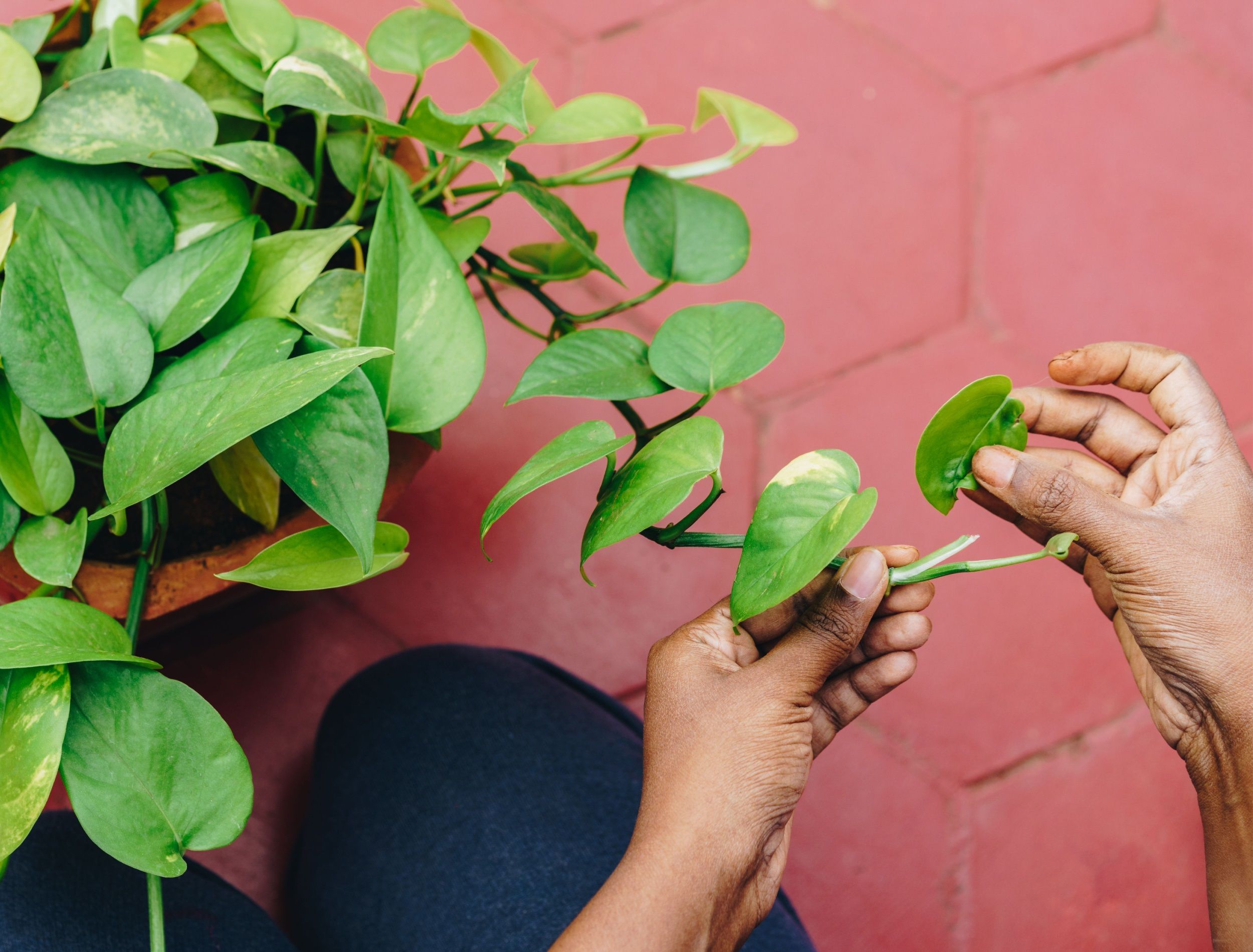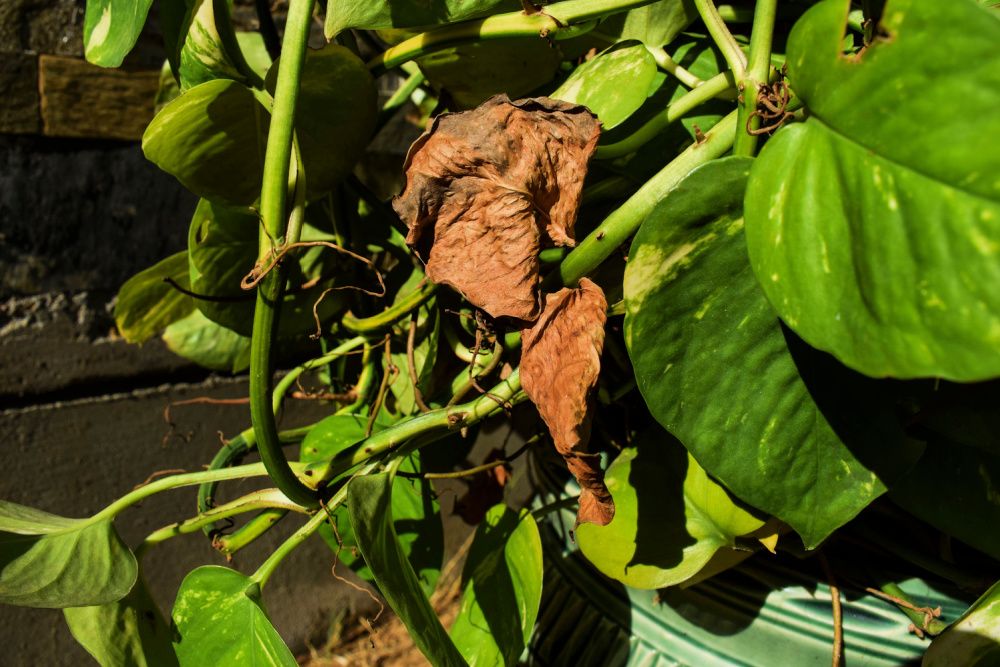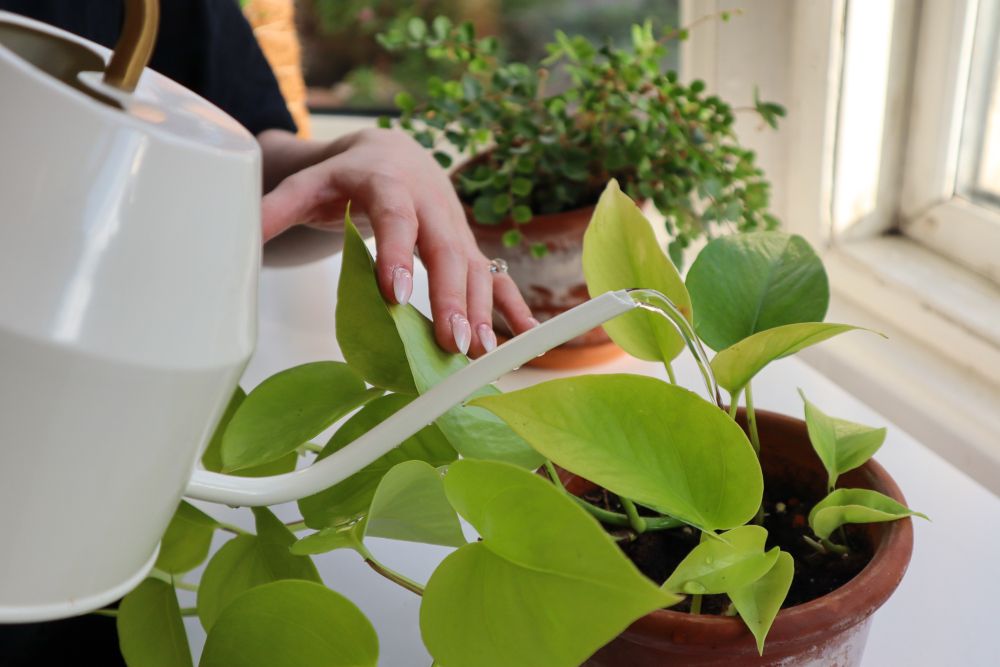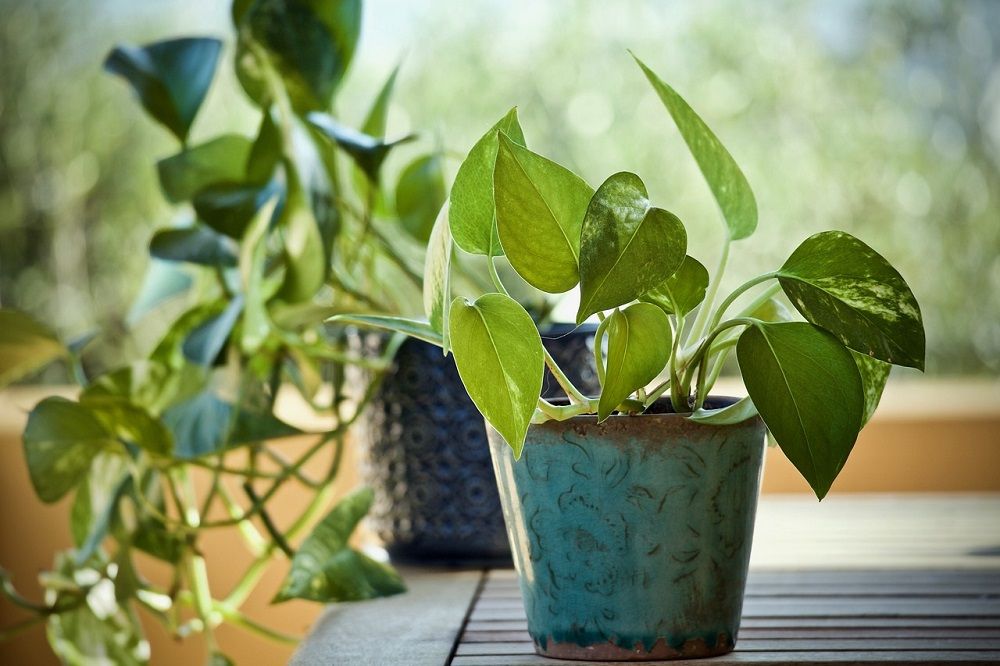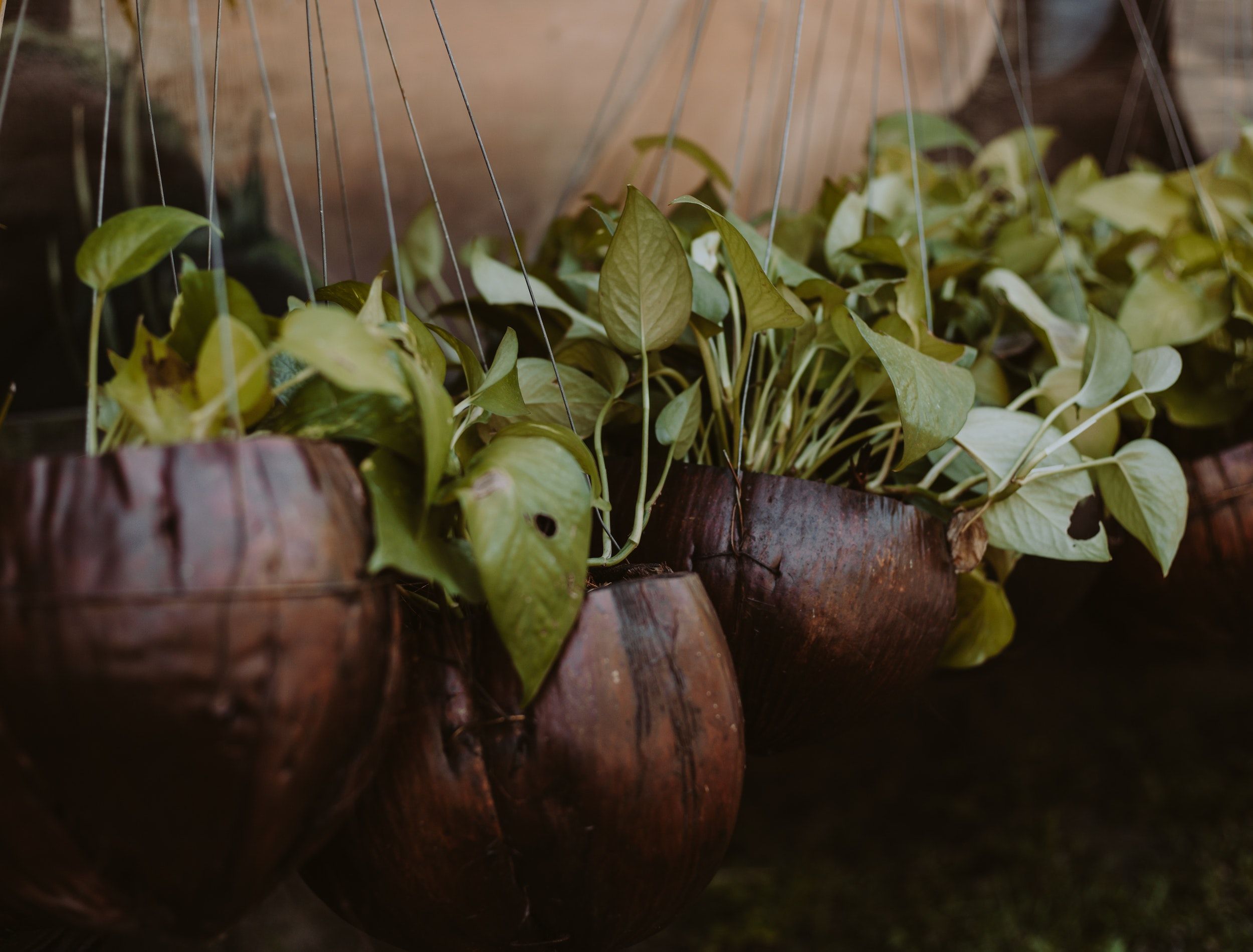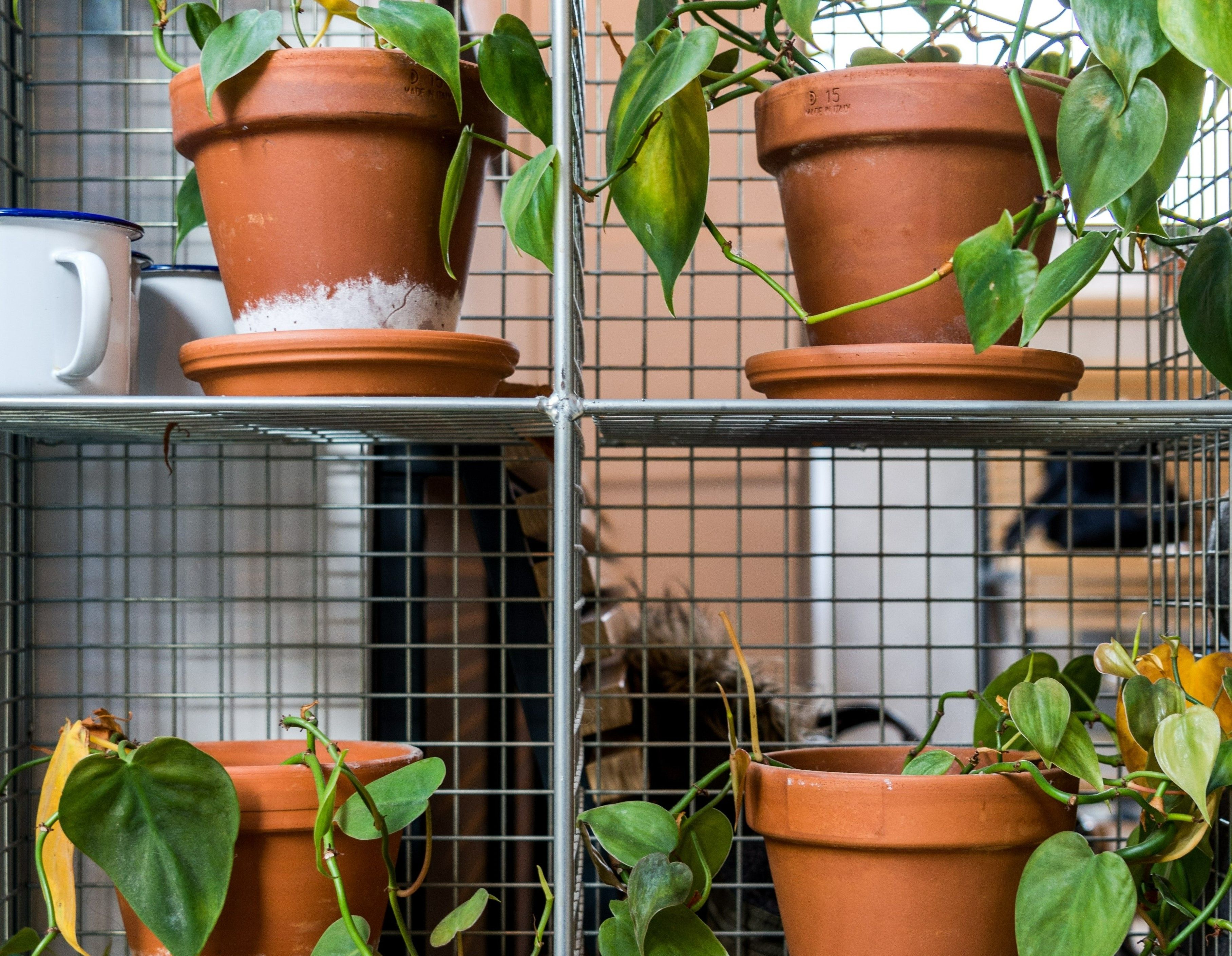Is your pothos plant losing its leaves? Although it can be distressing to see your plants dropping foliage, rest assured that there's an identifiable cause and solution.
Tropical vines like pothos naturally shed old leaves to allow new ones to grow. However, it can also be a symptom of a more severe problem. Discover why your pothos plant is losing leaves and what to do about it.
Reasons Why Pothos Plants Lose Leaves
Image credits: Rainbow_dazzle via Shutterstock
If you notice a few of the lower leaves on your pothos plant turning yellow or brown and falling off, but everything else seems normal, don't worry. It's normal for houseplants to drop their oldest leaves after a while, so most of the foliage grows at the vines' tips. Pruning your pothos plant helps to control its size and shape, makes it fuller, and encourages healthy new growth.
In contrast, if your plant loses many of its leaves at once and shows other signs of distress, the problem might be more serious. Symptoms include the leaves curling or drooping, becoming discolored, or developing mushy, rotten spots. There are a few common pothos problems that cause leaves to drop.
Watering Issues
Image Credits: Dan Jones via Flickr
Overwatering is one of the most common houseplant problems. When the soil stays wet for too long, plants' roots cannot absorb oxygen and nutrients from the soil. As a result, the foliage eventually turns yellow, brown, or black, wilts, and falls off. If the problem persists, the stems darken and turn mushy as the roots rot.
If you've accidentally overwatered your pothos, move it to a location with brighter light. That way, the plant will use up the water in the soil faster. Also, remove the plant from its pot to check the roots. If root rot has already set in, trim off the dark-colored, rotten roots and repot the plant with fresh, well-draining soil.
Conversely, drying out too much also causes plants to drop their leaves. Before falling off, the leaves will turn yellow, then get brown and crispy. However, after rehydration, pothos plants usually recover from underwatering within a few days. Thoroughly saturate the soil until the excess water flows out of the pot's drain holes.
Inconsistent watering, or going from too dry to oversaturated soil, stresses plants and causes them to lose leaves. Generally, water your pothos plant when the top 1 to 2 inches of soil are completely dry.
Light
Image credits: sweetlouise via Pixabay
Pothos plants grow best in bright, indirect light. They also tolerate low-light conditions well. However, more than two or three hours of direct sunlight burns the foliage. In this case, the leaves facing the window develop crispy brown patches and fall off. Move the plant to a different location with indirect sun.
Ideally, pothos plants should receive at least a few hours of bright, indirect light each day. If your plant isn't getting enough light, it will become elongated or "leggy." You'll notice larger spaces between leaves, and the foliage appears bleached and spindly and eventually starts to fall off.
Pests and Diseases
Image credits: Cottonbro studio via Pexels
Pest damage may cause foliage loss on houseplants if the problem goes untreated. Mealybugs, spider mites, and scales are some of the most common pothos pests. Their feeding scars plants' leaves, resulting in brown or yellow patches.
Mealybugs are white, woolly insects that appear in masses at the leaves' joints and undersides. Spider mites are tiny and difficult to see, so their webs are usually the most noticeable sign of an infestation. Scale insects look like small, dark-colored bumps on the leaves and stems. Spray the plant with insecticidal soap or horticultural oil every three or four days until the infestation is gone. Or, if it's too widespread, discard the plant to avoid spreading the pest problem to other houseplants.
One of the most prevalent pothos diseases is bacterial leaf spot. The first symptoms are soggy-looking lesions with yellow halos that spread quickly. Eventually, the entire leaf dies and falls off. Unfortunately, there is no effective cure.
In the early stages, removing the affected leaves may prevent the disease from spreading to the entire plant. If it's too severe, discard the diseased plant. To minimize the risk in the future, avoid getting leaves wet when watering and provide ample airflow.
Cold Damage
Image credits: Amelia Hallsworth via Pexels
Since they're tropical plants, pothos prefer warm conditions between 70 and 90 degrees Fahrenheit. Cold temperatures below 55 degrees Fahrenheit damage the plant, and large sections may die off. As such, keep your pothos away from drafty windows and doors.
Be-leaf in Yourself!
Seeing your beloved plant babies losing leaves is always nerve-wracking. While it's natural for plants to shed a few of their oldest leaves at a time, rapid yellowing and defoliation often indicate a serious problem. Pay attention to the other symptoms to determine the cause, then treat according to the above directions.
Do you have any questions or suggestions about pothos plants losing leaves? Please feel free to share them in the comments below.

